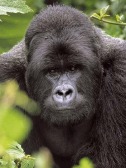Geography & Environment

Lauren Gerth
World History period 7
May 5, 2009
Uganda: Environment and Geography
Uganda is located in East Africa, just west of Kenya and east of the Dominican Republic of Congo. Most of the borders are created by water, seeing that Uganda is surrounded four great lakes, Lake Edward, Lake Victoria, Lake Kyoga and Lake Albert. Lake Victoria is known as the second largest inland fresh water lake in the world. Major rivers include the Albert Nile, and Victoria Nile. Nearly one fifth of the total landmass of Uganda is open water or swampland.
With the Equator going right through the southern end of Uganda the temperature ranges from 16 degrees Celsius in the south to 30 degrees Celsius in the Northeast. The temperature in the day time is usually about 8 to 10 degrees warmer, and in the Lake Victorian region it get about 14 degrees lower. Rainfall is well distributed through Uganda except in the northeast corner(ugandatourism.org). There are two rainy seasons in the south usually starting in April and again in October. With rainy seasons, there comes dry seasons too and for Uganda’s southern region they usually occur in June and December. However in the North, it rains in April and October, while dry seasons are in November and March. Annual rainfall around lake Victoria usually is more than 2,000 millimeters and in the mountains it is more than 1,500 millimeters a year (Mongabay.com).
Uganda is a very fertile country with natural resources like copper, cobalt, hydropower, and limestone, salt and arable land. Uganda faces problems such as overgrazing, deforestation and primitive agricultural methods, all of which lead to soil erosion (nationsencylopedia.com). Although Uganda is surrounded by water, not a lot of the people who live there have clean water that they can drink from. The poaching problem was big in the 1900s where many of the countries birds became endangered and mountain gorillas, northern white rhinoceros, and Nile crocodiles became endangered or extinct.
Annotated Bibliography
“Geography.” ugandatourism.org. 5 May 2009 <http://www.ugandatourism.org/geography.php>. This was the most helpful cite, it told me all about the Nile River running through Uganda. The rainy and dry seasons, Lake Victoria and the other Great Lakes.
Mongabay.com. “Uganda- GEOGRAPHY.” Mongabay.com. 5 May 2009 <http://www.mongabay.com/reference/country_studies/uganda/GEOGRAPHY.html>. This Web Cite was important because it told me what Uganda’s land was used for and how the Great Lakes affected Uganda.
Nationsencyclopedia.com. “Uganda- Environment.” nationsencyclopedia.com. 5 May 2009 <http://www.nationsencyclopedia.com/Africa/Uganda-ENVIRONMENT.html>. From this web cite I learned how much water the people of Uganda can drink. I also found out what environment issues are going on there.
“Uganda.” Infoplease.com. 2005. 5 May 2009 <http://www.infoplease.com/ipa/A0108066.html>. This cite told be about the history of Uganda. It also told me about population, land area, total area, and other helpful things like that.

